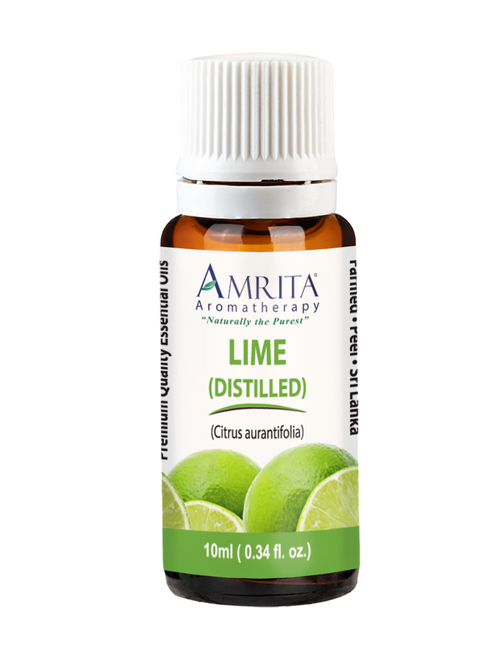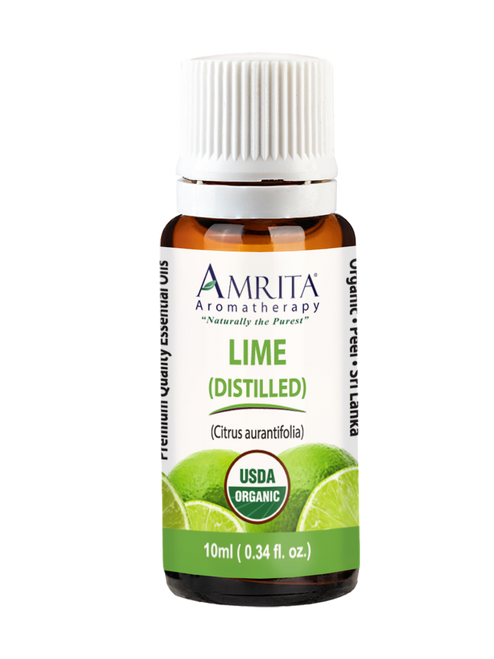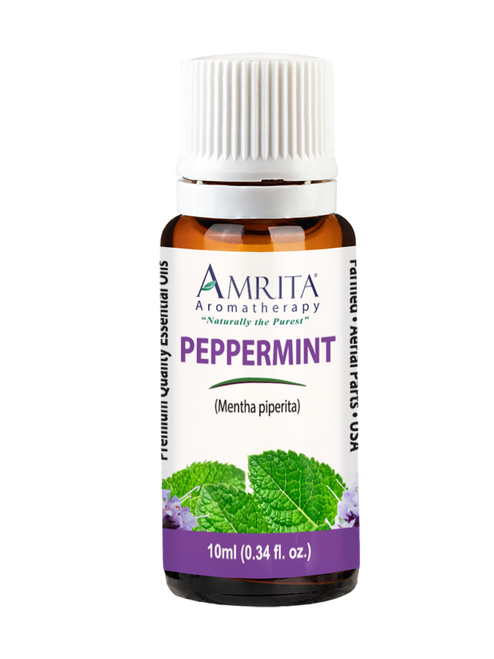- Other Names
- West Indian Lime, Key Lime, Mexican Lime, and Omani Lime
- Farming Method
- Farmed/Conventional
- Plant Part
- Peel
- Country of Origin
- Mexico
- Application Method
- Bath, Diffusion, Inhalation, Massage, and Topical
- Scientific Name
- Citrus aurantifolia
- Extraction Method
- Steam Distilled
Lime Essential Oil is a powerful oil that acts as a multitasking hero, serving as an astringent, disinfectant, and detoxifier.* Its benefits range from soothing sore throats and fighting the flu to clearing oily congested skin.* But that's not all – Lime Oil also works wonders for mental fatigue.*
Experience the refreshing and purifying effects of Lime Oil in your daily routine. Whether it's adding it to your cleansers, spritzes, or aromatherapy sessions, Lime is sure to set the perfect tone for your day. Rain or shine, Lime Oil delivers energizing and revitalizing effects.* In skincare, Lime Essential Oil tightens and tones oily skin; thus, it reduces oil production that leaves your complexion glowing.* In hair care, it fights dandruff and leaves your hair looking shiny and healthy.*
When it comes to aroma, Lime Essential Oil doesn't disappoint. Its sharp, sweet, and fruity scent instantly uplifts your mood and leaves you feeling refreshed and invigorated.* And if you need a mental boost during a busy day, simply diffuse Lime Oil or use it in an inhaler – its invigorating aroma will provide the energy you need.* But the benefits don't stop there – Lime Oil is also a valuable asset during cold and flu seasons by soothing sore throats.*
About the Plant:
The Citrus aurantifolia, also known as the Lime Tree, is a compact shrub that can reach heights of 5 meters (16 ft). It is adorned with thorny branches and has a distinctively crooked trunk. Dwarf varieties of this tree can even be grown indoors during the colder months.
The Lime Tree gets its name from its leaves, which resemble those of the Orange Tree. Its oval-shaped leaves, paired with yellowish white flowers tinged with a hint of purple, add to its charm. This tree produces flowers and fruits all year round, with the peak season being from May to September in the Northern Hemisphere.
When it comes to extracting the aromatic essential oils from Lime peels, steam distillation is the go-to method. This process involves injecting steam into the still, passing it through the peel containing the desired oils. The steam causes the peel to release its fragrant molecules, converting them into vapor. As the vapor cools and condenses, it turns into a thin, colorless to pale yellow liquid — the essential oil. The cold pressed oil is equally good; however, it is photo-toxic and therefore should not be put on the skin.
Where It Grows:
Citrus aurantifolia is native to Southeast Asia. Its apparent path of introduction was through the Middle East to North Africa, then to Sicily and Andalucia and then, via Spanish explorers, to the West Indies, including the Florida Keys. Henry Perrine is credited with introducing the Key Lime to Florida. From the Caribbean, Lime cultivation spread to tropical and subtropical North America, including Mexico, Florida, and later California.
In California in the late 19th century, "Mexican" Limes were more highly valued than Lemons; however, in Florida, they were generally considered weeds. Then, in 1894–95, the Great Freeze destroyed the Florida Lemon groves, and farmers replanted Mexican Limes instead; they soon became known as the Florida Key Lime, a "beloved regional crop". But when the 1926 Miami hurricane ripped them up, they were replanted with the hardier, thornless Persian Limes.
Since the North American Free Trade Agreement came into effect, most Key Limes on the United States market have been grown in Mexico, Central America, and South America. They are also grown in Texas, Florida, and California.
Traditional Uses and Lore:
The Lime, also known as Citrus aurantifolia, is believed to have originated from the East Indian Archipelago. It is found on many of the archipelago's islands and has spread to various regions such as South America, East Africa, Iran, Egypt, Arabia, and southern Europe. Lime seeds from Europe were likely brought to the West Indies and Florida after the colonization of the Americas, leading to the spread of Limes to Texas, Mexico, California, Central and South America.
Citrus aurantifolia is thought to be a tri-hybrid intergeneric cross, involving three different parental species, including citron, pummelo, and a Micro-citrus species. It likely originated in southeastern Asia, particularly Indonesia and Malaysia. There may also have been native populations in eastern and northeastern India, northern Myanmar, and southwestern China.
Arab traders are believed to have brought Lime to North Africa and the Middle East in the 10th century. It was then brought back to Europe by the Crusaders and cultivated by the 13th century. The Moors likely brought Lime to the Iberian peninsula, from where it was carried to the New World. There are reports that Lime seeds were brought to the Americas as early as 1493, during Columbus' second journey. The plant easily spread and grew in tropical regions of the New World.
The term "limey", often used derogatorily to refer to British people, originated from the British practice in the early 19th century of carrying limes on Royal Navy ships to improve the taste of food and prevent scurvy among sailors (although some sources argue that it was actually Lemon juice, not Lime, that was used).*
By the 19th century, Lime was commercially cultivated in Florida, including in the Florida Keys, hence its common English name. However, the industry was devastated by the 1926 Miami hurricane, reducing Lime cultivation to "dooryard" fruit status. In the 1950s, a public relations effort successfully renewed interest in Lime, leading nurseries to propagate it for sale. This may be the reason why the common English name is still used today. However, Lime production in Florida is currently minimal. Citrus aurantifolia is now primarily grown as a commercial crop in India, Egypt, Mexico, the West Indies, and tropical regions of the Americas and the Old World.
Other Facts:
- Scent: Soft, Zesty, Slightly Fruity, More Tart than Sweet Aroma
- Fragrance Note: Top Note
- Composition: α-Pinene, ß-Pinene, Myrcene, α-Terpinene, D-Limonene, γ-Terpinene, Terpinolene, α-Terpineol, and γ-Terpineol
- Family: Rutaceae Family
*These statements have not been evaluated by the Food and Drug Administration. These products are not intended to diagnose, treat, cure, or prevent any disease.
- Refreshing and Energizing Aroma
- Increases Energy and Clears Mindset
- Promotes Tissue Detoxification
- Check out the tabs below to learn more about Lime
Experience the refreshing and uplifting aroma of Amrita’s Lime Essential Oil. With its fresh, sweet citrus peel scent, this oil is a must-have for anyone seeking a natural and invigorating fragrance. Originally from Asia, Lime is now cultivated in warm countries around the world, including the Americas. By having Lime steam distilled, it decreases phototoxic concerns, making it safer for topical use.* Experience the refreshing and uplifting aroma for yourself and embrace renewed energy in every drop.*
Not only does Lime Essential Oil offer a delightful scent, but it also boasts a range of beneficial properties. Lime Essential Oil can help ease stress and agitation.* Simply add a few drops to your nebulizer or diffuser and feel your emotions refresh, allowing you to tackle decisions and emotions constructively.* In a recent study, 40 women were divided into two groups: the first group experienced a massage with Lime-Infused Oil, while the second group had a regular massage oil. The results were astounding — the Lime Oil massage group showed a significant decrease in systolic blood pressure compared to the other group.* Start your day off right by diffusing Lime Essential Oil in the morning. It will create a positive atmosphere, boost energy, and banish negative thoughts.*
Combat cold and flu symptoms with Lime Essential Oil.* This citrus oil is known for its antiseptic, antibacterial, and antiviral properties.* It can also clear "damp" and phlegm, making it a great remedy for lymphatic congestion.* Boost your immunity by blending Lime Essential Oil with Eucalyptus or .* Find relief during winter and breathe freely with clear airways by blending Lime Essential Oil with a carrier oil and applying to your chest.* Lime is also a mild detoxifier, and you can use it as part of massage therapy to reduce symptoms of cellulite and fluid retention.* Blending Lime and Grapefruit Oil in a carrier oil makes an effective massage blend for cleansing and detoxification.*
Add a vibrant touch to your natural deodorants, perfumes, soaps, and cleaning products with Lime's invigorating properties. Simply add 2-3 drops to your diffuser or place a few drops on a tissue inside your vacuum cleaner for a happy and clean atmosphere.* Plus, diffuse Lime with Spearmint for a tantalizing "island holiday" vibe.* Blend it with Sweet Orange, Grapefruit, or Bergamot for a delightful combination.
The following is a list of conditions which Lime Essential Oil addresses by category:
|
|
|
*These statements have not been evaluated by the Food and Drug Administration. These products are not intended to diagnose, treat, cure, or prevent any disease.
Tropical Application (for use on the skin):
|
||||
|
|
||||
|
|
Diffusion / Inhalation Application (add a few drops to a nebulizer or nasal inhaler):
|
|
-------------------------------------------------------------------------------------------------------------------------------------------------------------------
Blends Well With:
-------------------------------------------------------------------------------------------------------------------------------------------------------------------
Safety Precautions:
- Lime Essential Oil is non-toxic and non-irritant.*
- The cold pressed version is highly photosensitizing.*
- The steam distilled version is mildly photosensitizing.*
- Both could cause skin sensitization if oxidized.*
- Before using topically, perform a small patch test on your inner forearm of diluted essential oil.*
General Precautions:
- Use essential oils only in diluted form on the skin and never internally.
- Always be careful when using essential oils with children.
- Give them only low doses, or better, consult a qualified aromatherapy expert before using.
- Also, use essential oils with care and only under the proper guidance of an expert while pregnant or if you have liver damage, epilepsy, cancer, or other serious health problems.
*These statements have not been evaluated by the Food and Drug Administration. These products are not intended to diagnose, treat, cure, or prevent any disease.
Bottles are filled by volume. Some bottle sizes may not be filled to the top, but do contain the volume of oil specified.
|
Click the links below to view GC Analysis: |
Click the links below to view CoA Analysis: |
|
Click the link below to view Safety Data Sheet (SDS): |












